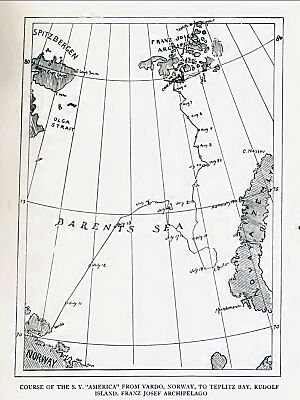Ziegler Polar Expedition facts for kids
The Ziegler polar expedition was a big trip that tried to reach the North Pole between 1903 and 1905. It didn't quite make it. The people on the trip got stuck far north in the Arctic Circle for two whole years! Luckily, almost everyone was rescued.
William Ziegler paid for this adventure. It was led by a man named Anthony Fiala. They started their journey from Tromsø, Norway, on June 14, 1903. Their ship was called the America.
Planning the North Pole Journey
William Ziegler chose Anthony Fiala to lead this important trip. Fiala had been a photographer on an earlier journey. He knew a lot about polar expeditions.
Fiala had to figure out how to carry enough food. An eight-dog sled team and its driver needed about 1,100 pounds of food. But a sled could only carry 600 pounds. To solve this, Fiala planned to use ponies. They would carry the extra supplies. When food ran low, the dogs could eat horse meat. This was a way to make sure the dogs had enough to eat.
Stranded and Rescued in the Arctic
In November 1903, very bad weather began. The ship, America, broke apart. This destroyed many of their supplies and coal. The crew was now stranded in the Arctic.
The next spring, the team tried again to reach the North Pole. They traveled both east and west. But the weather was too harsh. Open water also made it hard to travel. Their supplies started to run out. So, the expedition had to head south. They found more supplies at places called Cape Flora, Cape Dillion, and Camp Ziegler.
William Peters was the second-in-command. He used this time to lead the crew in survey work. This helped them make better maps and charts of the area.
The expedition members knew that rescue ships would be sent. This helped them stay hopeful. A rescue team was sent on a ship called the Terra Nova. William S. Champ led this rescue mission.
On July 24, the Terra Nova ran into thick ice. The crew worried they might not reach the stranded expedition. But the ship reached Palmi Island on July 28. The next day, it arrived at Cape Dillion. Six members of the expedition were found there. More members were found at Cape Flora. The Terra Nova then went back to Cape Dillion. A sled party was put together. This party brought the rest of the crew back to the ship.
See also
 In Spanish: Expedición polar Ziegler para niños
In Spanish: Expedición polar Ziegler para niños




